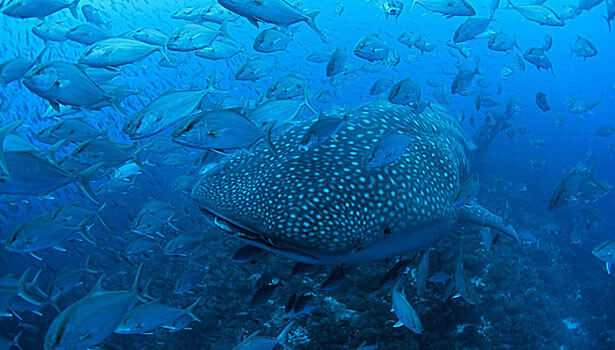Species Data

Vulnerable
Native
Some can reach to weigh more than 19,000kg!
Species Overview
The whale shark is the largest fish in the world, growing bigger than a bus. Covered in unique white spots, each individual can be identified by its markings, like a fingerprint. They are found in tropical waters around the world.
They feed in several different ways including suction filter-feeding, when they suck water into their mouths and filter small fish and plankton out to eat. They can dive to over 1,000 m but are generally found in surface waters with a temperature of between 21°C – 30°C.
Every year between July and September, whale sharks travel through Galapagos on what appears to be a long migration. Amazingly, over 95% of whale sharks observed in Galapagos are pregnant females, meaning that the Islands are a very important area for whale shark conservation.
For further information you can visit:





